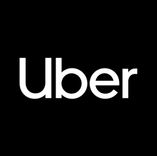
Uber Product Designer Behavioral Interview (Engineering Org, Mobility/Delivery/Freight)
What this interview is: a structured, story-driven behavioral screen used by Uber’s design and engineering orgs to assess how you drive measurable impact in a complex, real-time marketplace. Expect a 1:1 conversation that goes deep on decision quality, ownership, collaboration with cross‑functional teams (PM, Eng, Ops, Data Science, Legal/Policy, Safety), and your ability to ship at scale while balancing speed, safety, and quality. How it runs: 5–8 prompts with probing follow‑ups. Interviewers look for STAR‑formatted answers with clear context, constraints, alternatives considered, metrics moved, and post‑launch learning. You’ll be asked to quantify outcomes (e.g., trip completion rate, cancellation rate, delivery ETA, accuracy, fraud/abuse prevention, driver/courier earnings impact) and to explain the design rationale and experiment design. Core focus areas (tailored to Uber): 1) Ownership and Bias for Action: Times you took end‑to‑end responsibility, unblocked teams, or shipped under ambiguity/constraint (e.g., limited research runway, conflicting city regulations, data sparsity). Expect follow‑ups on trade‑offs, risks, and how you de‑risked fast iteration. 2) Marketplace & Systems Thinking: How you design for multi‑sided platforms (riders/eaters, drivers/couriers, merchants/shippers). Probes on fairness, incentive alignment, surge/availability dynamics, and preventing unintended behaviors or fraud while maintaining usability. 3) Customer Obsession & Local Relevance: How you incorporate qualitative insights with quantitative signals across diverse markets (language, accessibility, low‑end devices, low bandwidth, cultural norms). Expect questions about tailoring flows for Mobility vs. Delivery vs. Freight. 4) Data‑Informed Decision Making: How you define north‑star and guardrail metrics, partner with Data Science on experiment design, read A/B results, handle metric regressions, and decide when to roll forward/roll back. 5) Collaboration Across Ops/Policy/Safety: Navigating constraints from city rules, safety requirements, or merchant operations; aligning with support and on‑the‑ground Ops; escalating when needed; documenting decisions. 6) Craft, Execution, and Design Systems: Raising bar on interaction details, accessibility, localization, and design system contributions; ensuring consistency across consumer and earner experiences and across platforms. 7) Communication & Influence: Structuring written artifacts (problem statements, design briefs, experiment readouts), setting crisp decision criteria, and aligning diverse stakeholders without authority. 8) Trust, Safety, and Ethics: Handling sensitive scenarios (identity, payments, safety incidents), building trust at critical moments (pickup, handoff, delivery), and anticipating abuse/edge cases. What strong answers include: 2–3 rich stories with concrete before/after metrics; explicit constraints; alternatives you rejected and why; measurable impact; cross‑functional alignment; and what you’d do differently. Bring artifacts you can reference verbally (no screen share required): experiment plan, metric dashboard, design brief, or rollout plan. Sample prompts used in this round: - Tell me about a time you shipped a high‑impact feature under severe time or regulatory constraints. How did you balance speed, safety, and quality? What moved, by how much, and how do you know? - Describe a multi‑stakeholder design problem (e.g., riders vs. drivers/couriers vs. merchants). What trade‑offs did you make, and how did you protect against negative externalities (fraud, cancellations, unfair workload)? - Give an example where your research or data contradicted stakeholder intuition. How did you persuade the team and what was the outcome? - Walk me through an experiment you designed for a core metric (e.g., trips completed or on‑time delivery). What were the guardrails and decision rules to ship, iterate, or roll back? - Tell me about a time localization or accessibility materially changed your solution. What signals prompted the change and what was the impact across markets? - Describe a conflict with a PM/Engineer/Operations partner. How did you resolve it and what did you learn? Evaluation signals: clear problem framing; rigorous metric thinking; pragmatic speed with risk management; sensitivity to marketplace dynamics; crisp, structured communication; evidence of end‑to‑end ownership; demonstration of Uber‑scale design craft and empathy for both consumers and earners.
60 minutes
Practice with our AI-powered interview system to improve your skills.
About This Interview
Interview Type
BEHAVIOURAL
Difficulty Level
4/5
Interview Tips
• Research the company thoroughly
• Practice common questions
• Prepare your STAR method responses
• Dress appropriately for the role